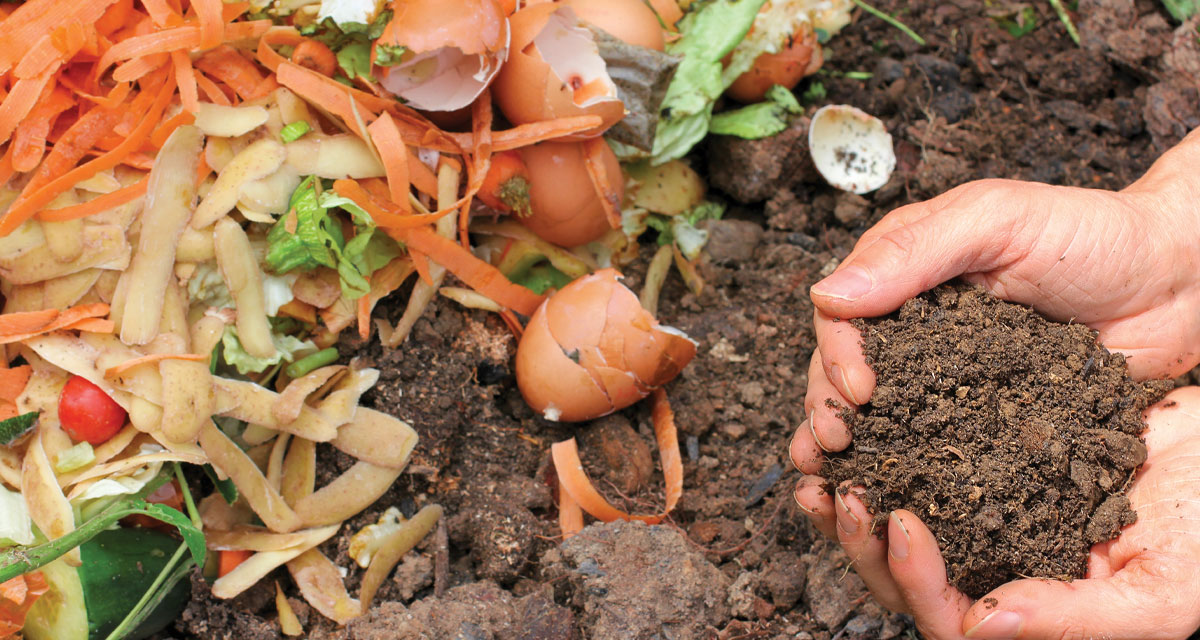The people dating back two generations ago were thrifty, resourceful, and savers; practicality became a lifestyle and a means of survival. Today, we toss almost everything in the trash can. Reflection on the way we now live and perform day-to-day chores can be an eye-opening experience. Consider adding onto the creative ways you can reuse waste.
The Annual Herb
The sweet, fragrant herbs, basil, sage, thyme, tarragon, and lemongrass, to name a few, often outgrow their initial home, whether it’s a pot or the ground, and need a new home. Unfortunately, the annual herb lasts one season unless we take matters into our own hands and propagate it. Consider taking a few cuttings from healthy limbs and placing them into a cup of water, awaiting the arrival of roots. If you are concerned about your samples, dip the stem into a natural rooting hormone, such as aloe vera gel or raw honey.
Grass and Leaves
The seasonal change of cooler weather and falling leaves is almost here. It’s nature’s way of saying, “I’m offering you a gift!” Rather than toss clippings onto the roadside, use them to amend your vegetable or flower garden. The free “mulch” adds valuable nutrients, especially nitrogen, to any location. In the spring, gardeners will notice a richer coloring, an overwhelming number of earthworms, fewer weeds, and a healthier harvest later in the fall.
Tip: Mulching leaves and grass allows the small remnants to remain at the lawn’s surface and provides moisture for new grass to germinate. Additionally, the summer heat adds stress; mulching maintains moisture levels and aids the emerald-green coloring.
Composting
Clearing the debris out of a garden is a cumbersome endeavor; however, it’s the perfect time to reduce the waste generated from the kitchen garden, landscape, and yard. Don’t allow the expectation of a smelly composter to deter you from starting; in fact, the balance of equal values of green and brown decomposable items, plus aeration and water, equals a smell best described as “earthy.” Just imagine having a location where you can toss your kitchen scraps, which include coffee grounds, eggshells, tea leaves, fruit rinds, cooked pasta, cooked rice, and stale bread. Other items include pet hair, shredded newspaper, toilet paper cardboard, grass, and leaf clippings. Before getting started, please talk to the family about this investment of time. Everyone needs to become involved in this new system. The transformation is impressive, from kitchen scraps and yard debris to supercharged soil, packed with nutrients which fight off pests and retain moisture.
Tip: While you can purchase a stationary bin or basket from a store or online, homeowners can easily construct a composter using pallets, or T-posts and chicken wire.
Homemade Bone Broth
As a staple in many diets, bone broth is beneficial in support of healthy joints, digestion, skin, and wellness. Making it from scratch will offer the advantages of 19 amino acids and glucosamine chondroitin. It’s helpful if your animal bones are organic and free of antibiotics and hormones. Since the process takes 24 hours on low heat, it’s best to use a crock pot. Start with a roast chicken carcass or beef bones, containing fat and meat. Next, toss in whole vegetables, such as carrots, celery, onions, garlic, and their scraps! Don’t worry, you’ll strain it out later. Finally, add a pinch of sea salt, peppercorns, and a splash of apple cider vinegar to draw out the minerals from the bones.
Tip: Grass-fed beef and lamb should be browned before adding it to a stockpot.
Meal Broth and Powder
Grounded chicken and livestock bones make a popular slow-release organic fertilizer containing nitrogen, phosphorous, and calcium to nourish your plants. Rather than purchasing a bag, the task of making your own is relatively easy.
Process: Boil the bones to remove residual meat or fatty tissue before cooking for an hour at 400 degrees. Place the brittle bones into a tear-proof sack; use a meat tenderizer until fragments are no larger than one inch. Then, grind the residual pieces into a powder.
Tip: Poultry bones are easier to crush and grind than beef or pork bones. Keep this in mind if you lack a powerful blender or grinder.
Tip: Bone meal may be added to your compost heap or mixed directly with the soil around the base of your plants.
This two-part series is just the beginning of discovering the practical ways to reuse waste. Seeking a particular interest, you’ll find plenty of “hacks” through social media, videos, and articles with pictures. One particular interest may stand out on Instagram; if curious, check out “The Creative Explained.”
*Lisa is an N.C. State Cooperative Extension Master Gardener Volunteer and a state-certified beekeeper.























